Today, let’s take a look at the MSI MPG A1000G PCIE5 power supply. It is MSI’s latest PSU, which is ATX 3.0 compatible and PCIe5.0 ready. It also has the new 16-pin 12VHPWR PCIe power connector for the latest NVIDIA RTX graphics cards. A higher-end PSU is also available, the MEG Ai1300P PCIE5 80 Plus Platinum PSU, and it comes with monitoring features. Meanwhile, the MPG A1000G PCIE5 is only 80 Plus Gold, but it is cheaper. We’ll check that one as well at a later date. Note that there is an existing MPG A1000G PSU in the market. The naming scheme is a bit confusing, but the newer one is “MPG A1000G PCIE5”. Yes, the word “PCIE5” is part of the product name. Anyway, let’s learn more about the new MSI MPG A1000G PCIE5 power supply below.

MSI MPG A1000G PCIE5 PSU 1000W Preview – Features and Specs
Before we begin, I don’t want to waste your time. This is only a preview of the MPG A1000G PCIE5. In this article, let’s explore its features and specifications, and I’ll show you photos of the product itself. I haven’t put the PSU yet to the test since (unfortunately) we currently don’t have one of NVIDIA’s latest RTX 40 series graphics cards. Hopefully soon. The PCIe 5.0 12VHPWR is the main feature of these new PCIe 5.0 compatible power supplies. And without that new connector or feature, this is no different from the MPG A1000G PSU, which is currently available in the market.
The MSI MPG A1000G PCIE5 power supply is one of the company’s latest ATX 3.0 compatible and PCIe 5.0 ready power supply. Again, don’t confuse this new model with the older MPG A1000G that doesn’t feature PCIe 5.0 connectivity. It’s 80 Plus Gold certified, promising lower energy consumption and higher efficiency. You know the drill, 80 Plus Gold PSUs are common these days since they are generally efficient without costing too much.
It also features a single-railed design, uses 100% Japanese capacitors, and has a 135mm fluid dynamic bearing fan, with 0% RPM mode, cooling the components. When it comes to protection, the MPG A-series PCIE5 PSU features the following: over current protection; over temperature protection; over voltage protection; over power protection; under voltage protection; and short circuit protection.
MSI’s new MPG A-series PCIE5 PSU is available in 1000W, 850W, and 750W capacity with the following model respectively: A1000G PCIE5, A850G PCIE5, and A750G PCIE5. Below are the specifications of each PCU model.
MSI MPG A-Series PCIE5 Power Supply Specifications
| A1000G PCIE5 | A850G PCIE5 | A750G PCIE5 | |
|---|---|---|---|
| Form Factor | ATX | ATX | ATX |
| Rated Wattage | 1000W | 850W | 750W |
| Efficiency Rating | 80 PLUS Gold (up to 90%) | 80 PLUS Gold (up to 90%) | 80 PLUS Gold (up to 90%) |
| Modular | Yes (fully modular) | Yes (fully modular) | Yes (fully modular) |
| Fan Size | 135 mm | 135 mm | 135 mm |
| Fan Bearing | Fluid Dynamic Bearing | Fluid Dynamic Bearing | Fluid Dynamic Bearing |
| Dimensions (DxWxH) | 150 x 150 x 86 mm | 150 x 150 x 86 mm | 150 x 150 x 86 mm |
| PFC Type | Active PFC | Active PFC | Active PFC |
| Input Voltage Range | 100~240 VAC | 100~240 VAC | 100~240 VAC |
| Input Frequency Range | 50~60 Hz | 50~60 Hz | 50~60 Hz |
| Protection | OCP / OVP / OPP / OTP / SCP / UVP | OCP / OVP / OPP / OTP / SCP / UVP | OCP / OVP / OPP / OTP / SCP / UVP |
| ATX (24 Pin) | 1 | 1 | 1 |
| EPS (8 Pin) | 2 | 2 | 2 |
| PCI-e 5.0 (16 Pin) | 1 | 1 | 1 |
| PCI-e (6+2 Pin) | 6 | 6 | 6 |
| SATA (15 Pin) | 12 | 8 | 8 |
| Molex (4 Pin) | 4 | 4 | 4 |
| FDD (4 Pin) | 1 | 1 | 1 |



Packaging and Closer Look


The MSI MPG A1000G PCIE5 power supply came in a black box with a purple highlight. You can see a photo of the power supply at the front of the box, including its highlighted features. Printed at the back are some of its features, specs, and included cables. The retail box is very similar to other power supplies’ packaging in the market. You open the box by lifting/opening the top cover from the side.
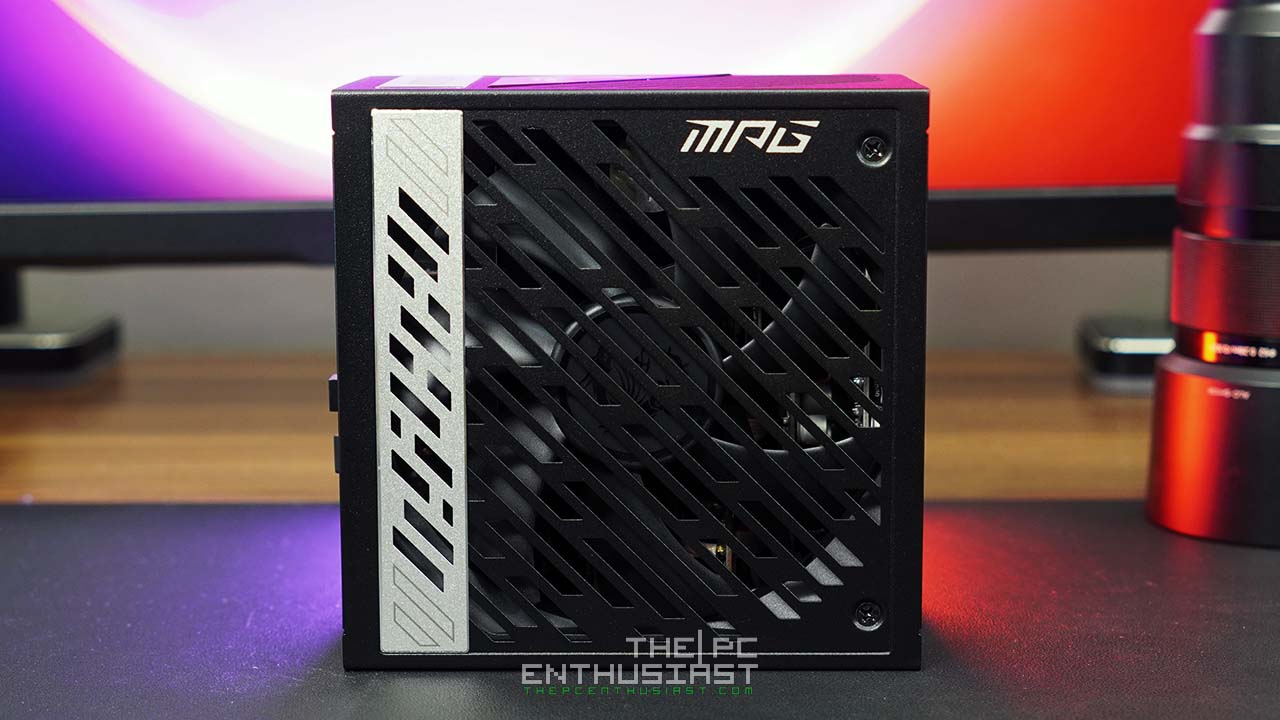

Despite being a 1000W PSU, it only measures 150mm x 150mm x 86 mm. Some of my 1000W power supplies, like the Season Prime TX-1000 or the SilverStone ST1000-PT, are a bit larger than the A1000G PCIE5. Although, they are 80 Plus Platinum, unlike the A1000G PCIE5.
There is a silver stripe/highlight on the top-front portion and the sides of the A1000G PCIE5. The MPG logo is printed on the top portion and the sides as well. Aesthetically speaking, it looks a bit stylish and the fan grill design is an eye-catcher as well. The A1000G PCIE5 has an all-Black with a Silver color scheme. And generally speaking, I think it’s nice and neutral-looking.
On the bottom side of the PSU, you can read its power and voltage specs as well as some caution for the user.
Power Connectors and Switches


MSI’s MPG A1000G PCIE5 power supply features a fully modular design. If you’re not familiar with the term, full modular means that all the cables on the PSU are detachable. You only need to connect the cables that you need for your system. This minimizes cable clutters and you can easily replace the cable if needed.
Looking at the power connectors, you’ll see all the usual suspects: ATX 24pin power connector, CPU and PCIe connectors, SATA and Molex connectors, and the new 16-pin +12VHPWR connector. The 16-pin power connector was first introduced with NVIDIA’s RTX 30 series Founders Edition graphics cards. But most partner custom graphics cards opted to use two or three 8-pin PCIe power connectors.
However, with the new RTX 40 series graphics cards, not only has NVIDIA decided to stick with the 16-pin power connector, but AIB partners are using the 16-pin power connectors as well.



These new RTX 40 series graphics cards will include a 16-pin to (4x/3x) 8-pin power connector adapter. So, if you have an existing power supply, it may work and support the latest RTX 40 series graphics cards. However, note that these new GPUs are power-hungry. Most will need at least a 1000W PSU.
New 12VHPWR is Better than Three/Four 8-Pin PCIe Power Connectors
So why get a new PSU with a PCIe 5.0 connector if the current power supplies can still be used? If you’re building a new system, it’s better to get one of these new power supplies. Whether you’ll need the PCIe 5.0 connector or not, it may come in handy one day since graphics cards are starting to shift to the new power connector.
Another advantage of these new PCIe 5.0 power supplies is that they can handle sudden power spikes better than older and current-generation PSUs. These power spikes can cause the system to freeze, blue screen, or even shut down. Some reviewers, like Linus Tech Tips, encountered some (power) issues when they tested the RTX 3090/3090 Ti FE graphics cards despite the power supply they used meeting the minimum GPU power requirement.
These new PCIe 5.0 PSU, like the MPG A1000G PCIE5 and A850G PCIE5, can freely deliver up to 600W of power to the graphics card. However, depending on the system, you may want to avoid the A750G PCIE5 since its 12VHPWR connector can only deliver up to 450W.
Cables Included
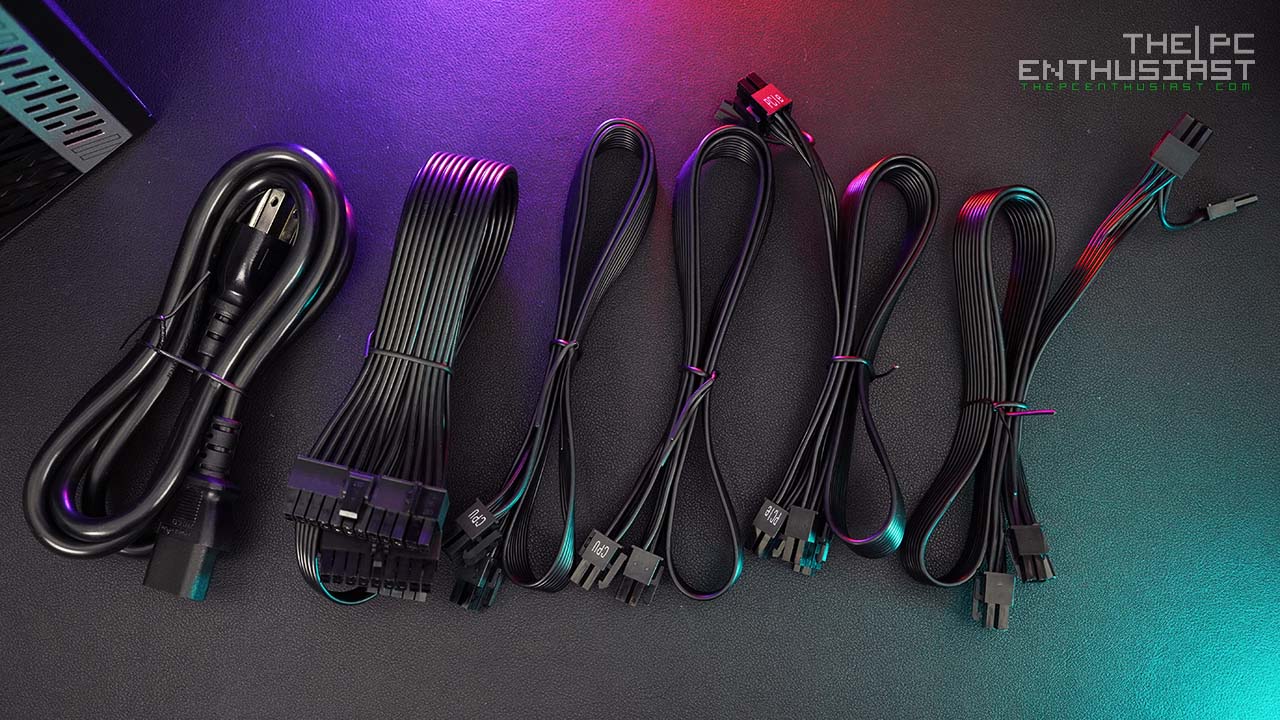


The MSI MPG A1000G PCIE5 comes with a decent set of cables. Most of the cables are flat, except for the 12VHPWR cable. With the A1000G PCIE5, you get 1 (thick) power cable; ATX 24-pin cable, two EPS 8-pin cables, 3 SATA cables with 4 connectors each, 1 cable with 4 Molex and FDD connectors, 2x PCIe cables with two 6+2-pin connectors each, and finally two cables for the 12VHPWR.
The Main Feature – 16-pin 12VHPWR


For the 12VHPWR connector, there are two types of cables. One is a 16-pin to 16-pin PCIe power connector, and the other is a 16-pin to 2x 8-pin PCIe power connector. If you have a graphics card that uses the new 16-pin power connector, you only need to use the 16-pin to 16-pin cable. At least it will look clean and no “octopus” cables dangling from your graphics card.
You can also use the 12VHPWR to power a graphics card that uses the 8-pin/6-pin PCIe power connector. Again, less cable clutter since you will only need one cable coming from the power supply. Unfortunately, there is no 16-pin to 3x 8-pin PCIe connector. So, if ever you own a graphics card that uses a 3x 8-pin power connector, like the MSI RTX 3080 TI SUPRIM X, you will have to use three 8-pin PCIe power cables.
I like the new 16-pin 12VHPWR power cable. You only need 1 cable even for a power-hungry graphics card like the new RTX 4090. This means, less cable clutter, and cable management would be much easier.
Testing To Follow…
As I mentioned earlier, we currently don’t have one of those RTX 4090 graphics cards, sadly. I’ll have to wait for an RTX 40 series graphics card so I can test the new power connector. Other than the new 12VHPWR PCIe 5.0 power, the rest of the power supply is similar to the current and existing 1000W PSU, like the A1000G. It works as expected and nothing seems to be out of the ordinary.
UPDATE: Just a minor update about this PCIE5 PSU. I recently tested and reviewed MSI’s GeForce RTX 4080 SUPRIM X and Zotac’s RTX 4080 Trinity OC. I used the MPG A1000G PCIE5 throughout testing both graphics cards. So far, I didn’t encounter any issues at all. The system was running smoothly, and everything was stable.
I used the PSU’s native 16-pin 12VHPWR connector when testing both graphics cards. You need to plug it correctly, make sure you hear a “click,” and there shouldn’t be any visible gap between the plug and the socket.
Unfortunately, the native 16-pin 12VHPWR cable is a bit stiff. So, I can’t close the side panel of my case due to the limited space between the side panel and the graphics card. If I try to close the side panel (forcibly), the cable bends, which may cause the cable to be partially disconnected from the graphics card’s PCIe power connector. I hope an angled 16-pin 12VHPWR cable will be available soon. I wouldn’t risk bending the cable too much.
Pricing and Availability
The MSI MPG A1000G PCIE5 comes with a manufacturer’s suggested retail price of $199.99. MSI is also offering a 10-year warranty for the said power supply. For the latest pricing and availability, kindly follow the links below.
MSI MPG A1000G PCIE5 PSU is available on Amazon.com here or Newegg.com here.
There’s also a higher-end version with 80 Plus Platinum rating. The MSI MEG Ai1000P PCIE5 PSU, and it is available on Amazon.com here.

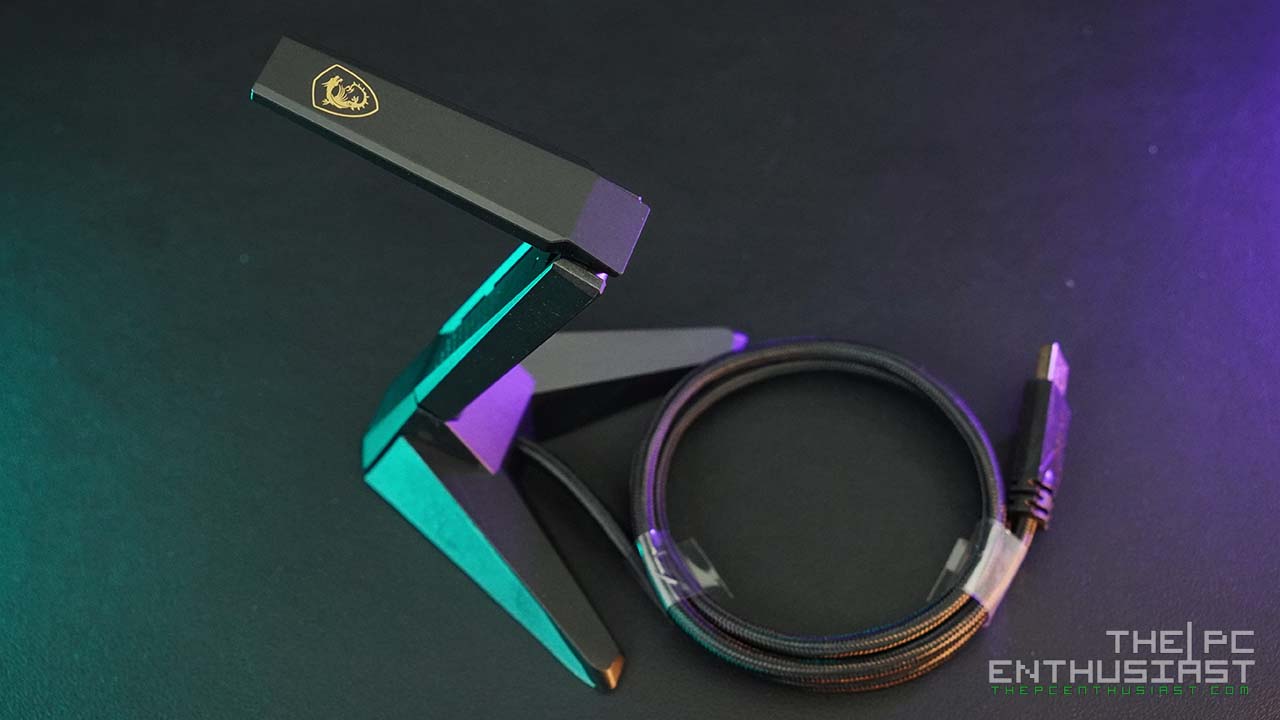
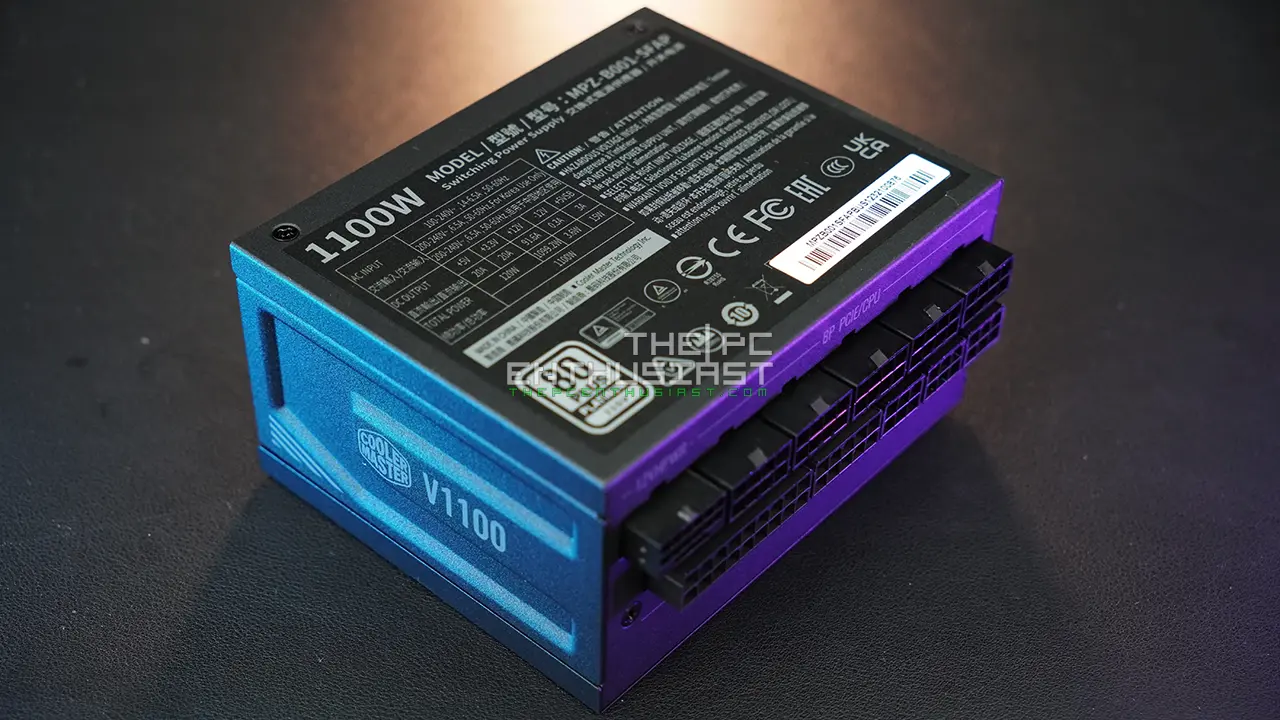


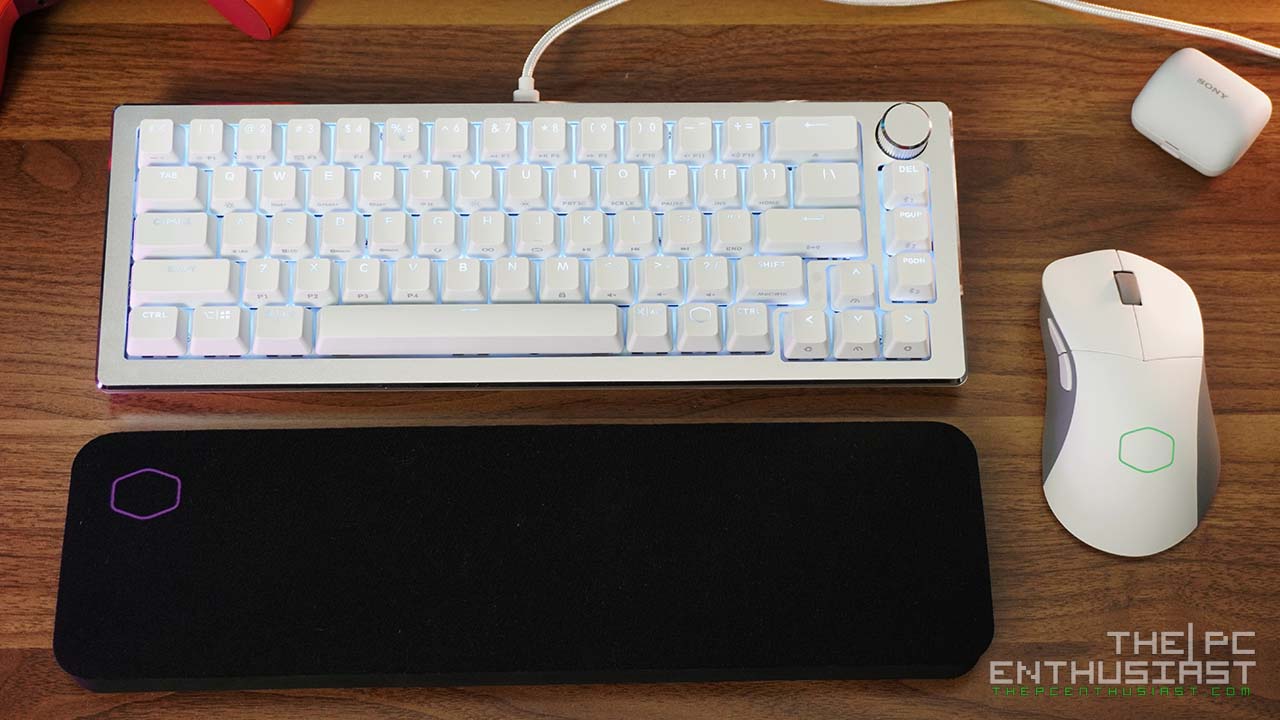
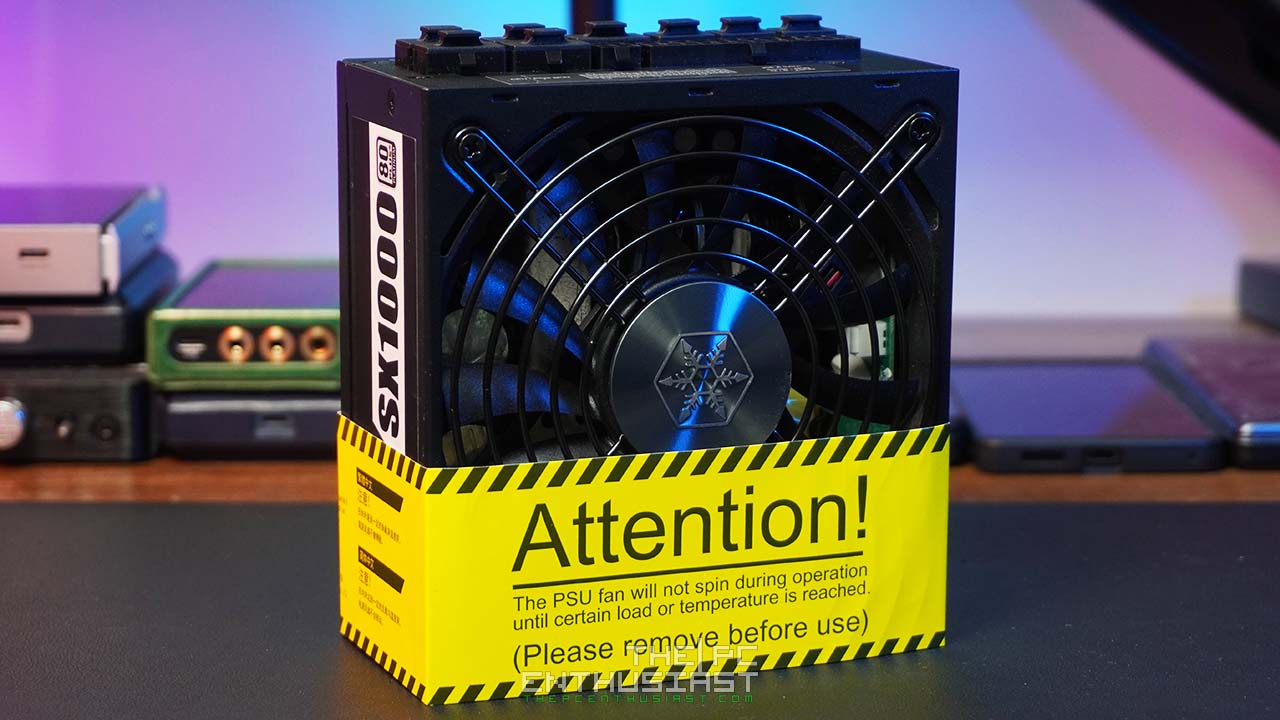

Hi Peter.
Thank you for your article.
Very keen hear how your testing goes.
Any idea when these PSU’s will hit the market please?
Regards,
Simon
Hi Simon,
It’s now available at Amazon.com here or Newegg.com here.
Hey! I’ve upgraded to this psu but using 3080 with the 3×8 pin connection. I want to uae cables that came with PSU. For the +12vpwr (16pin) to 6+2 pin connector. Could I use this as third pgu connection with the other two 8 pin cables?
Hi Benjamin, I asked MSI this before, but they recommend that you use 3x 8-pin PCIe connector if the graphics card requires 3x 8-pin PCIe power.
If it only needs two 8-pin PCIe power, then you can use the 16-pin cable to 2x 8-pin PCIe. I would not mix and match them. Better to be safe than sorry.
hello, can I use a corsair type 4 cable that plugs into the gpu and splits into 2 PCIE, I heard I needed to check the psu’s compatibility with it but I was unsuccessful in finding any information regarding that
I would not do that. Plugging Corsair’s cable into an MSI PSU? That may not be compatible or would not work at all.
The worst case is you can damage your system.
It’s best to use like-for-like components, Corsair with Corsair and MSI with MSI.
On top of that, even if it’s from the same manufacturer they may not be compatible even.
Hey, first of all thanks for the quick response, I appreciate it, so I thought the most important part was the type 4 PCIE compatibility, that’s crazy though, that such a costly psu and the 1000 watt version at that could have compatibility issues with a gpu power supply cable.
The 12VHPWR that comes with the psu doesn’t work for my rtx 4070Ti ,doesn’t really make sense but anyway, and people are saying to avoid that ,a split into multiple PCIE slots is most likely safer anyway, so I used the 16pin into 3 female PCIE that came with the gpu(4070Ti),and it works but just doesn’t look great, the split happens so close to the 16pin end that you can see all 3 PCIE cables all the way through(I did hide them as much as possible ofc).
So the cable I was talking about was :
Corsair Premium 600W PCIe 5.0 / Gen 5 12VHPWR PSU Cable – Fits Type-4 PSUs via Dual 8-pin PCIe – 12+4pin Connector
Other alternatives, for example LINKUP and Fasgear, do not make power supplies, which means their only possible use would be to plug them into ”any” compatible psu, I checked the reviews and it doesn’t look like people are concerned about power supply compatibility or had any issues with that, so I’m assuming they’re different from the Corsair cables.
MSI doesn’t give enough info about it’s compatibilities (checked different sources),so the question remains unanswered when it come to corsair premium cables, I will follow your advice as I do not wish to be the one to find out the answer at the expense of my gpu.
The safest option is sticking to the low quality cable that came with the gpu,btw the gpu is an MSI, and I’m pretty sure that shouldn’t even matter normally but since it’s an MSI gpu that came with it’s own cable, then surely it’s an MSI cable and not a random cable(doubt it tbh)? and since I’m using an MSI psu as well.. That just makes no sense at this point,
if you could tell me what you think about the Linkup and fasgear variants, I think it should work fine since people have already done it.
Hi, yes, the safest way is not to mix-match cables. Only use the cables that came with the PSU. Or at least is compatible and recommended by the manufacturer.
By the way, for clarification:
– What PSU are you using or referring to? I assume it’s the MPG A1000G? (since you commented here)
– What specific model is your RTX 4070 Ti? Because my 4070 Ti came with an adapter that only splits into two 8-pin PCIe connectors. I believe most 4070 Ti cards also has this.
I’m sorry, but I am not familiar with Linkup or Fasgear. And I don’t use 3rd party cables at all.
Well, the 16-pin 12VHPWR adapter that came with RTX 40 cards, If I am not mistaken, is outsourced and made by a few OEM companies. I don’t think MSI made those adapters that came with their graphics cards. Perhaps they just bought it; same with NVIDIA’s FE and other RTX 40 cards from other companies.
Yes, I understand; it does look ugly when using the 16-pin adapter.
By the way, how come the stock 16-pin 12VHPWR cable did not work? What do you mean by “it doesn’t work”, exactly? I use the stock 12VHPWR cable of the A1000G to test most RTX 40 cards that require the new 16-pin connector. From two RTX 4080s down to the RTX 4070 FE, it worked, and I didn’t encounter any issues. I just made sure that the cable/plug was well-seated on both ends (PSU side and Graphics card side).
-Yes, I am referring to the psu you just mentioned
-MSI RTX 4070 Ti Suprim X
So yes, the first cable I tried was the stock 16pin 12vhpwr cable, and the result was that I had no display, even though I was getting power from the motherboard, I did make some changes on the BIOS however as I initially thought that could be the problem, the motherboard indicator was showing a Dram error, so I had to disable XMP which was on by default for some reason and running at 6000Mhz at that, even though my cpu should have limited it to 4800, then I had to disable the onboard graphics to force the system to use the dedicated GPU, and more.
After that it still didn’t work so I had to use the other cable, now I’m thinking back and maybe, just maybe I hadn’t plugged it all the way in? I’m not quite sure anymore, so this is a build for a friend and I’ll be visiting on monday anyway so that’s when I’ll try it again, and it might just work this time, I’ll keep you updated.
That is very strange. If your graphics card didn’t work with the stock 16-pin 12VHPWR that came with the PSU, there might be an issue with the cable and/or the PSU.
I presume you used the 16-pin to 16-pin cable, right?
If the cable/PSU doesn’t have an issue, perhaps the problem lies elsewhere.
You’ll know if you have plugged it all the way in when there’s no gap anymore. Make sure you have plugged both ends properly.
update: I tried again and it actually worked, I guess I did something wrong the first time after all.
Problem solved, you have my gratitude, you’ve been a great help.
Great! Just be sure that both ends are seated and connected properly, and try to avoid bending. Happy gaming! 👍